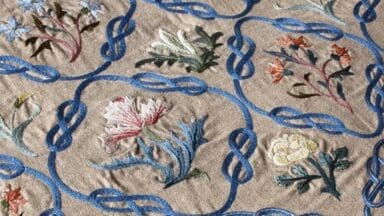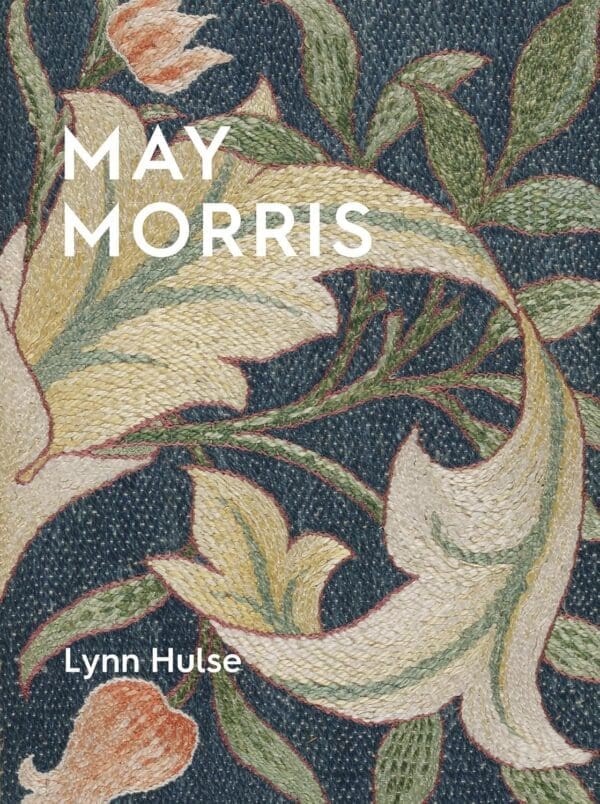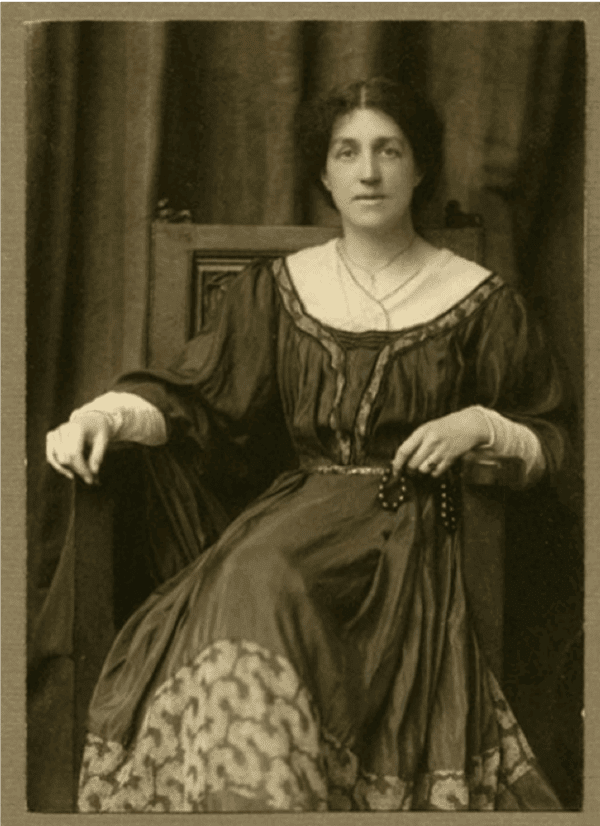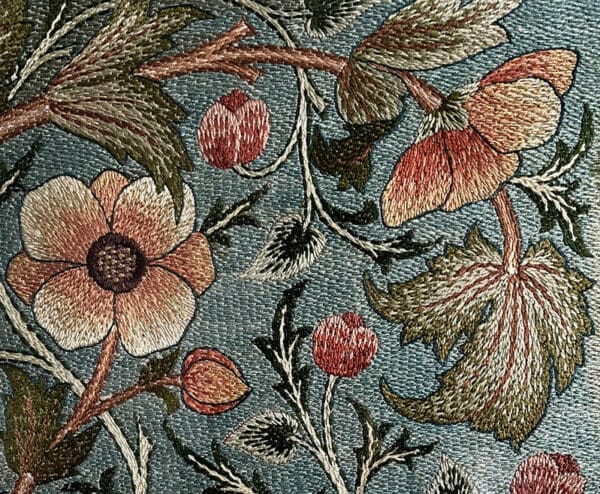
The younger daughter of the designer, author and socialist William Morris and his wife, the embroiderer and artist’s model Jane Morris, May Morris (1862-1938) was an influential embroiderer and designer in her own right.
Morris, driven by her passion for gardening and deep appreciation for the English countryside surrounding Kelmscott Manor, her Oxfordshire home, transformed her intricate drawings of perennial shrubs, meadow flora, and cottage garden blooms into exquisite embroidery art. Unlike mere recollections of nature, her work showcases her exceptional ability to translate form, texture, and colour into truly artistic patterns. Morris described design as ‘the very essence and soul of beautiful embroidery’ .
The new book by textile historian Lynn Hulse, titled “May Morris: The Essence and Soul of Beautiful Embroidery” (Ashmolean), delves into the life and work of this exceptional craftswoman. The book showcases her extensive needlework designs, the largest collection of which are housed in the Ashmolean Museum in Oxford.



© Private collection
As well as specimens of historic needlework in museums and private collections, she also drew inspiration from manuscripts such as Leonhart Fuchs’s ‘De historia stirpium’ (1542) and John Gerard’s ‘The herball, or generall historie of plantes’ (1633) – copies of which were gifted to her by her father.
The Ashmolean collection, includes more than 300 of Morris’s designs, ranging from roughly sketched ideas to finished outline patterns, dating from her years spent managing the embroidery department at Morris & Co. through to the First World War and beyond.
Drawing on the collection, Hulse’s new book aims to make the designs more widely accessible to embroiderers, providing inspiration for the creation of projects based on Morris’s working methods, but also the historical context of the works in the continuum of decorative needlework.

